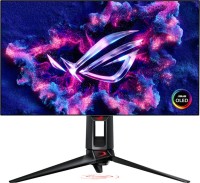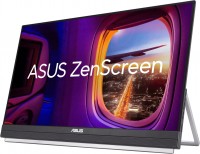Monitors Asus series ROG Swift (Gaming)
prices on 20 modelsAsus ROG Swift series (gaming)
ROG Swift monitors are the pride of the Asus gaming division. We can say that this is a showcase that shows all the advanced developments of the company. Do you want the world's first 360 Hz refresh rate monitor? You are welcome. Fundamentally need NVIDIA G-Sync? Take it! Would you like HDR10 support for dessert? And it is possible. As a result, 90% of ROG Swift monitors are stuffed in such a way that most gamers don't really need it.
 |
How do ROG Swift monitors differ from their ROG Strix counterparts? Initially, the ROG Swift was a step higher, but in the 2020-21 models, the price difference was practically leveled, and the average check in both cases is in the range of 500 – 800 dollars. The difference is that ROG Strix mainly uses VA matrices with basic AMD Freesync, while high-end IPS matrices with NVIDIA G-Sync predominate in the ranks of ROG Swift. Asus was one of the first companies that managed to design an IPS monitor with a high scan rate, and subsequently this idea became one of the key ones in the promotion of ROG Swift monitors. Well, G-Sync is a more advanced and sophisticated alternative to Freesync, which works both on the hardware and software level.
Otherwise, the characteristics of the ROG Swift models do not stand out so much against the background of other modern monitors, but the devil lies in the details. With a similar colour coverage, ROG Swift leaves behind most competitors thanks to the use of top-end matrices and intelligent factory calibration. The additional Dark Boost and Gamma modes in ROG Swift really help in games. And thanks to a good supply of brightness, they reveal all the charms of HDR content. As additional options, a USB hub and built-in speakers are most often found.






